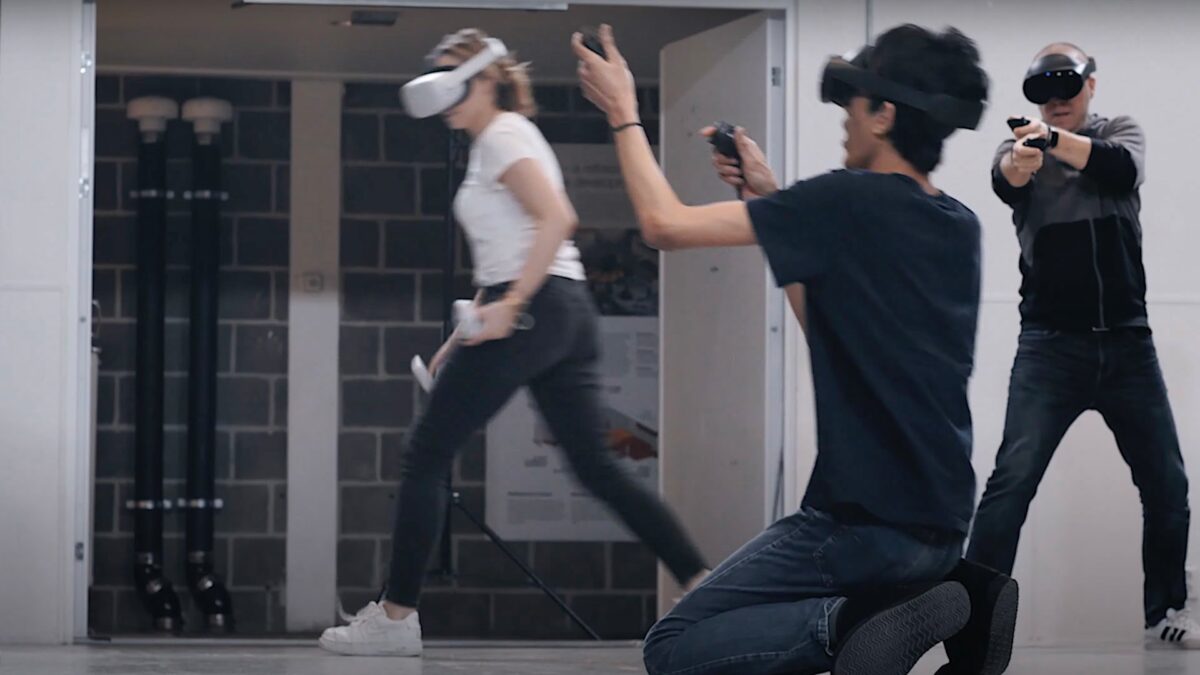After years of waiting, Meta Quest 2 now supports local multiplayer

Added statement by Resolution Games.
Meta launches local multiplayer for Quest 2. Studios can now develop games for the headset using the new API.
Experience virtual and mixed reality with others in the same physical space: Meta's new multiplayer interface makes it possible.
The interface is called Shared Spatial An chors and was announced last fall at Meta Connect 2022. In December, Meta released the interface to developers, but only supported Meta Quest Pro.
As of now, the interface also supports Meta Quest 2 and Quest Link, according to Meta's developer blog. This means that the first games and experiences could soon appear in the Quest Store and App Lab, offering local multiplayer while reaching a large audience.
Long wait for local Quest multiplayer
Meta demonstrated a local gaming experience for the first time at Oculus Connect 5 in September 2018.
Visitors entered a 450-square-foot gaming arena and engaged in virtual gunfights in a western scenario using Meta Quest 1. No external sensors were used, and the entire experience was completely wireless.
The demonstration was unique to this event, however, and Meta did not release a local multiplayer interface for several years. Possibly due to safety concerns: when multiple people play virtual reality together in the same room, accidents and injuries can occur more quickly because people see each other only as digital avatars and are blind to the physical environment.
With the advent of mixed reality, this danger is reduced, if not eliminated. Especially since the physical environment and the human counterpart can be seen through a pass-through camera view.
In 2022, Meta released several new mixed reality interfaces for developers. These are now followed by the Shared Spatial Anchors API, which enables local multiplayer.
Here's how local multiplayer works
The interface is an extension of the older Spatial Anchors API. While the latter allows digital objects to be permanently anchored in space, the new interface allows anchor points to be shared between two or more users who are in the same space.
"By loading shared anchors, users can create a common frame of reference so that people in the same physical space can see and interact with the same virtual content," Meta said in October when it unveiled the new interface.
Shared Spatial Anchors are now supported on Meta Quest 2, PC Link, and Meta Quest Pro, enabling you to build local multiplayer experiences that reach an even wider audience and bring more people together in VR. Get started with Shared Spatial Anchors ➡️ https://t.co/g8NJafGhzH pic.twitter.com/ygzfHsHVvV
— Oculus Developers (@Oculus_Dev) February 7, 2023
A now-deleted video showed how the technology works. According to the video, in a first step, the Quest headsets capture key features of physical objects and use them to create a 3D point cloud. This information is then shared and synchronized between devices. The point clouds run through Meta's servers, so users must first enable the option in the headset settings for privacy reasons.
An impressive showcase of this technology is presented by XR studio Resolution Games with the local multiplayer game Spatial Ops, which transforms physical spaces into a battle arena. The title can be downloaded and tested as part of an open beta on Sidequest.
I asked the studio whether the title will come out to the App Lab or the Quest Store now that the API officially supports Meta Quest 2. "We are not announcing additional platforms for Spatial Ops at this time", said a spokesperson.
President & Co-Founder of Resolution Games Paul Brady said to MIXED: "The development possibilities for mixed reality gaming continue to grow at a remarkable pace. Extending these possibilities to more headsets is a boon for the industry, as it helps creators introduce more players to compelling MR experiences. At Resolution Games we continue to work on a variety of projects in MR, VR, and AR, and are always grateful to see a broader availability for tools and APIs that can help bring great gaming ideas to life."
Note: Links to online stores in articles can be so-called affiliate links. If you buy through this link, MIXED receives a commission from the provider. For you the price does not change.